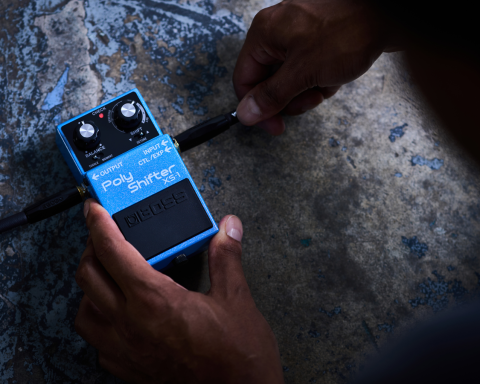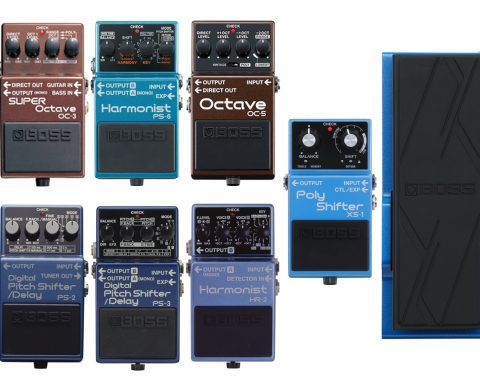IR (impulse response) and Cab Sim (cabinet simulator) pedals have become increasingly popular over the last decade. As amp and cab capture technology has advanced, so has the authenticity of IR sound quality and the detail and accuracy of the preamp, power amp, and mic’d cabinet reproduction on a digital scale.
Over the last few years, the guitar community has embraced IR technology as a tool to expand your tonal creativity, streamline your setup, give you access to previously unobtainable gear, and ensure that you can replicate your exact guitar tone whether you’re at home, in a studio, or on stage. In short, IR pedals are total game-changers for guitarists and bass players everywhere. Learn to maximize their potential.
What is an IR Pedal?
An Impulse Response, in terms of its application to guitar, is a sonic snapshot measuring the exact sound of a complete amplifier setup. That includes the cabinet, the microphone, the microphone placement, the room, and any rackmount gear or effects a player is using. This snapshot can then perfectly replicate these exact conditions, whether practicing on headphones at home or running the IR to the front of house at a show.
It’s important to note that IRs are digital captures of actual real-world equipment. They aren’t interpretations or approximations, like many amp-in-a-box type effects pedals. They are audio files capturing the exact tonal qualities and character of a particular setup within the entire 20Hz to 20kHz frequency range. That audio file is then interpreted by an IR loader so that those sonic characteristics can be perfectly replicated.
How to Use an IR Pedal
IRs have a myriad of applications for guitarists. They can transform how a guitar player practices at home using headphones. There’s no need to play quietly through an amplifier or use a smaller practice amp that doesn’t accurately recreate your tone; with IRs, the tone you create and use is the same in every situation. That tone can be sent perfectly and accurately to the front of house at a performance without concern about how your cabinet is being mic’d or any bleed from drums and other instruments.
It’s also quick and easy to record incredible guitar tones at home. IR pedals, like the BOSS IR-2 and IR-200, can be sent straight to an interface, capturing professional-quality tones straight into your DAW without any complex setup or the need for space, soundproofing, or volume.
One of the most creative features of IRs is that anyone can create them. Impulse Response software is readily available, and there are numerous online resources where musicians have collated their IRs. So, for owners of vintage amplifiers who worry about taking them out on the road, IRs can offer a simple solution that allows those players to keep their amps in a safe environment while still getting that classic tone night after night.
Five IR Pedal Uses
Cab Sim Alongside External Preamps
While pedals like the IR-2 and IR-200 offer a complete preamp and cabinet simulation solution, there are also a ton of preamp pedals and amp-in-a-box effects out there that can provide expanded tactile controls and alternative tones to those included in the IR series of pedals.
For that reason, BOSS IR pedals are designed to be able to split their functionality and be used simply as a cabinet simulator, providing the tonality of your chosen cabinet and mic combination without restricting you to the included onboard amplifier range.
This can be very useful in maximizing your preamp’s flexibility. For example, if your preferred preamp is a simple mono stompbox, the IR-200 can provide a stereo cabinet simulation, potentially blending two different cabs for a thick, full-bodied guitar tone.
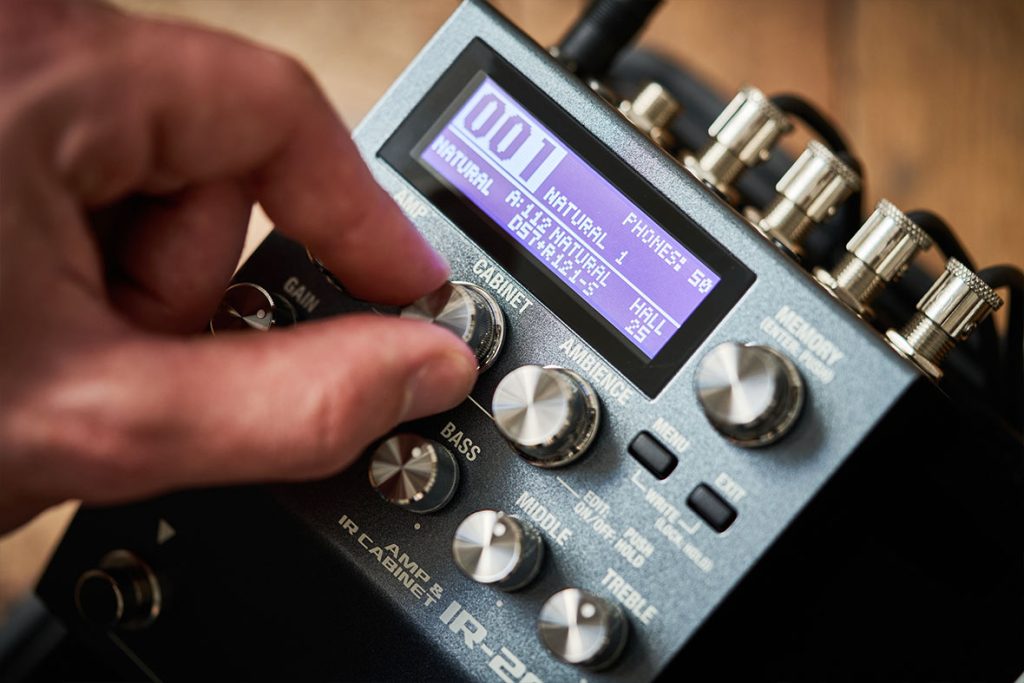
Preamp into Real-World Cabinets
Conversely, the IR range of pedals can be used as a preamp only, providing a simulation of your favorite guitar amplifier without an assigned cab sim. This can be very useful for coupling the IR pedals with real-world FRFR speakers, power amp and cabinet setups, or even amplifier FX loops.
For example, it is possible to run the IR pedal into the FX loop of an amplifier, bypassing the amp’s preamp and replacing the amp’s fundamental tonal characteristics. This allows you to transform a Marshall-style voiced amplifier into a Fender or vice versa. It also allows you to use the IR pedal alongside a real-world cabinet rather than relying on stage or in-ear monitoring.
"One of the most valuable functions of the BOSS IR-2 is the ability to switch between two unique IR tone presets via the stompbox footswitch."
Switching Between Two Amp Tones via Footswitch
One of the most valuable functions of the BOSS IR-2 is the ability to switch between two unique IR tone presets via the stompbox footswitch. This function opens up the pedal’s versatility, allowing you to use it as a drive channel, ambient patch, or simply an alternative voicing for specific sections.
For example, you can set your default IR tone as a Fender Twin Reverb-inspired clean pedal platform and transform your rig into a Soldano SLO-100-style metal monster with a stomp of the footswitch. This function is handy for fly rigs and super stripped-back setups, replacing the need for additional external overdrive pedals.
Utilizing the FX Loop of Stereo Amps and Effects
In its simplest form, an IR pedal replaces the need for cumbersome and heavyweight guitar rigs, making load-ins a dream. However, the BOSS IR series of pedals can also expand your guitar tone into huge wall-of-sound stereo rigs, which you would create through time-consuming amp chaining and ramping in a recording studio.
You can use the IR pedals in stereo in both performance and recording situations, sending detailed amplifier and cabinet sounds (the IR-200 features dual EQ and cabinet options) to the mixing console or recording interface to build a complex amp tone.
Utilizing a BOSS IR pedal’s Ambience function, it’s also possible to send a stereo reverb and, in the case of the IR-200, edit the stereo image of the cab sims via the cab time lag (Adjust) function to control and shape a super-wide surround sound for your guitar tone.
"The IR series pedals can also expand your guitar tone into huge wall-of-sound stereo rigs."
Improve Acoustic Piezo Pickup Zone
A practical but less obvious use for an IR pedal is breathing new life into your acoustic tone. Acoustics fitted with piezo pickups are fantastic for live use; they’re easy to use, allowing an acoustic guitar to be used in a band setting without messing around with an external mic and being stuck in one particular position while playing.
The downside is that often, piezo pickups don’t emulate the depth and tonal grandeur of an excellent acoustic guitar. Fortunately, the advent of Impulse Responses has completely solved this issue.
Countless third-party IRs and brands offer official IRs of their entire acoustic guitar range. It’s also possible to create and capture your own acoustic guitar IR with very little equipment to truly replicate the sound of your acoustic guitar in a live scenario with the BOSS IR-2 and IR-200.
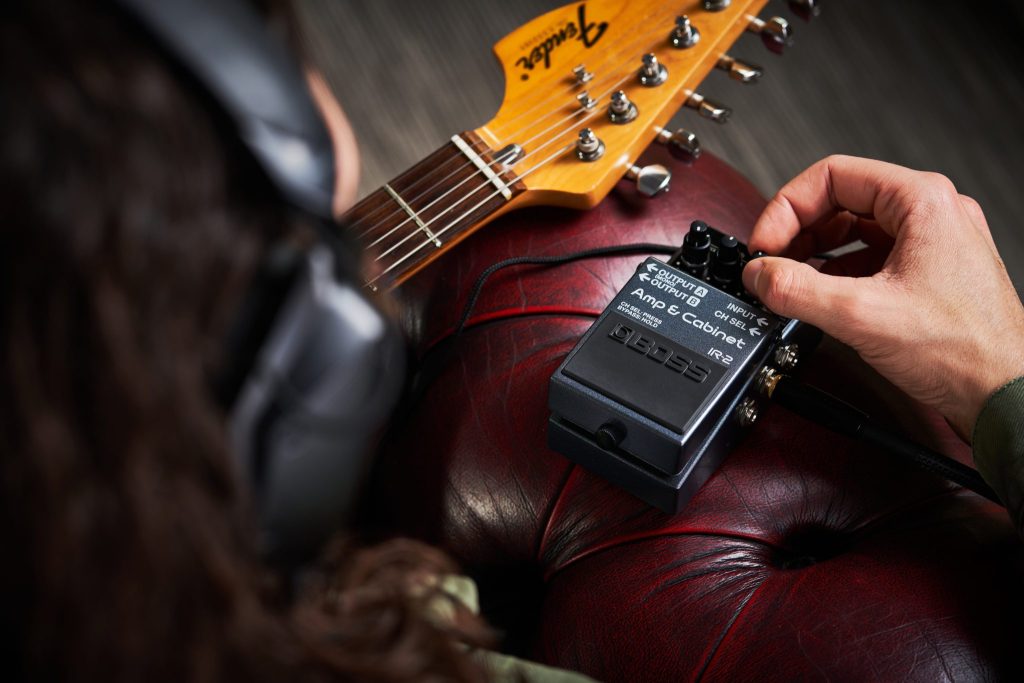
No Limits to Tonal Creativity
IR pedals and Cab Sims are such brilliantly versatile tools that they can expand and develop your guitar tone in ways that aren’t possible without huge studios full of expensive equipment. They offer detailed tone shaping, fantastic fly-rig solutions, and an almost unending pool of third-party resources. Explore them fully, and you’ll find no limits to where your tonal creativity can go.




